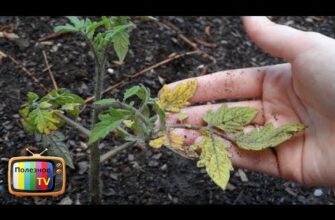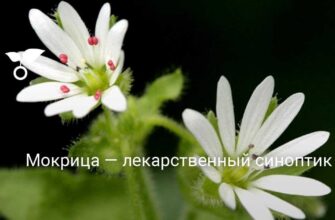- Черенкование батата: секреты выращивания клубней
- Подготовка почвы для черенкования батата
- Выбор места и подготовка почвы
- Выбор и подготовка здоровых растений
- Правильный способ укоренения черенков
- Оптимальные условия для роста батата
- Полив и удобрение растений
- Защита от вредителей и болезней
- Когда и как собирать бататы
- Сохранение и хранение урожая
- Уборка урожая
- Чистка и сушка
- Упаковка и хранение
- Использование батата в кулинарии
- Популярные сорта батата для черенкования
- 1. Сорт «Белая Сатин»
- 2. Сорт «Фиолетовый Жемчуг»
- 3. Сорт «Золотая Роза»
- Вопрос-ответ:
- Какой сорт батата лучше всего подходит для черенкования?
- Можно ли черенковать батат из покупного клубня?
- Какие условия выращивания нужны для черенкования батата?
- Сколько времени занимает черенкование батата?
- Как правильно ухаживать за черенкованными растениями батата?
- Видео:
- Ипомея Батат удивительное растения. В саду может быть не только петуния.

Черенкование батата — это один из самых популярных способов размножения этого растения. В отличие от семенного способа, черенкование позволяет получить гарантированно качественные и здоровые клубни. Этот метод особенно полезен, когда у вас есть ограниченное количество растений и вы хотите получить больше материала для посадки. В этой статье мы расскажем вам о нескольких секретах успешного черенкования батата и поделимся полезными советами.
Первый шаг в черенковании батата — выбор здоровых и крепких растений-родителей. Идеальными кандидатами для черенкования являются растения, которые дали хороший урожай и не имеют признаков болезни или повреждений. При выборе растений-родителей также обратите внимание на размер клубней: выбирайте растения с крупными и здоровыми клубнями, чтобы получить хороший урожай черенков.
Следующий шаг — подготовка черенков. Для этого выберите здоровые побеги с 2-3 междоузлиями и удалите нижние листья. Затем поставьте черенки в воду или посадите их в субстрат. Важно помнить, что черенки батата нуждаются в теплом и влажном месте для корневания, поэтому поддерживайте оптимальные условия и регулярно проверяйте влажность субстрата или воды.
Черенкование батата — это простой и эффективный способ получить больше клубней из ограниченного количества растений. Следуя советам по выбору растений-родителей и правильной подготовке черенков, вы сможете получить здоровые и качественные клубни батата для посадки.
Черенкование батата: секреты выращивания клубней
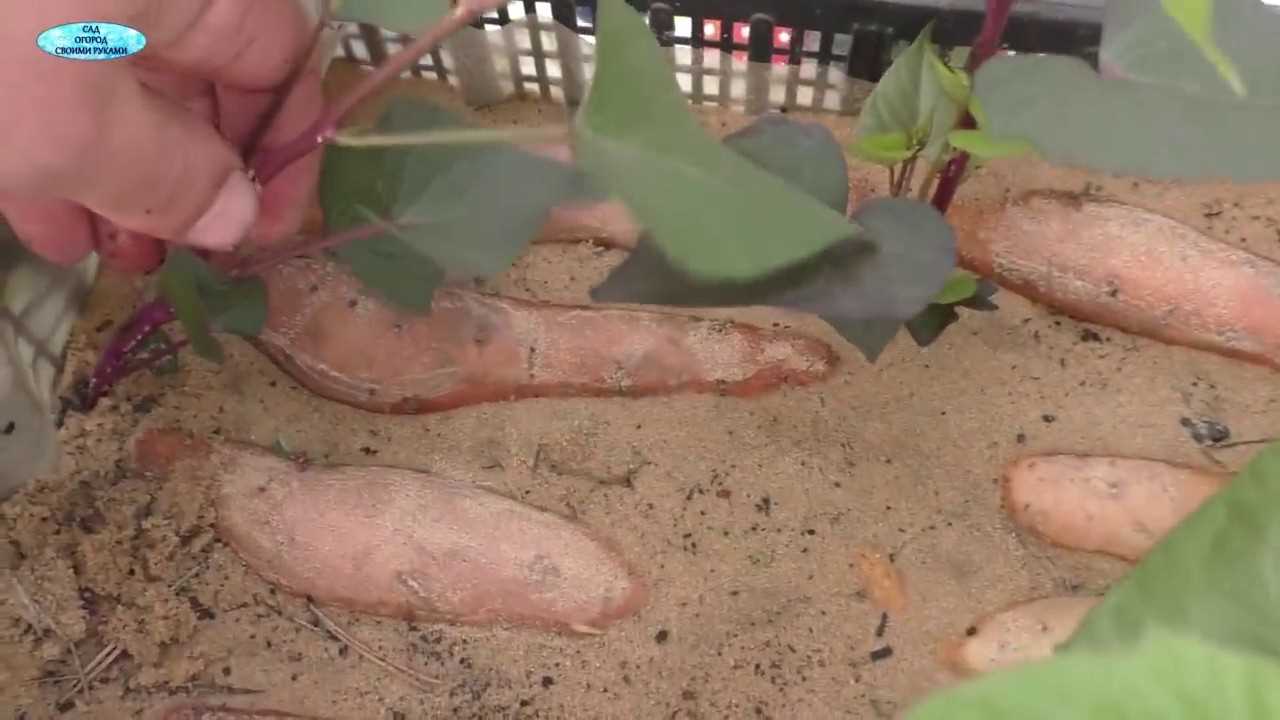
Черенкование батата — это один из самых популярных способов выращивания новых растений из небольшого количества клубней. Этот метод позволяет получить больше растений на поле и сохранить сортовую чистоту.
Для черенкования батата необходимо выбрать здоровые и крупные клубни. Лучше всего использовать несколько растений с разными сортами, чтобы получить разнообразие в урожае. Клубни следует разрезать на черенки длиной около 15 см. Важно помнить, что каждый черенок должен иметь по крайней мере один «глаз» — место роста.
Далее, черенки батата следует засадить в подготовленное поле. Для этого можно использовать специальные садовые инструменты или просто зарыть черенки в землю на глубину около 10 см. Расстояние между черенками должно быть около 30 см, чтобы растения имели достаточно места для роста.
После засадки черенков необходимо обеспечить растениям правильный уход. Это включает в себя полив, рыхление почвы, удаление сорняков и подкормку. Батату требуется достаточное количество влаги, поэтому полив должен быть регулярным. Рыхление почвы поможет сохранить влагу и улучшить доступ кислорода к корням растений. Также рекомендуется удобрять растения органическими или минеральными удобрениями, чтобы обеспечить им достаточное питание.
Следуя этим секретам черенкования батата, вы сможете вырастить большое количество здоровых и крепких растений на своем поле. Батат является ценным и питательным культурным растением, и его успешное выращивание даст вам возможность насладиться свежими и вкусными клубнями.
Подготовка почвы для черенкования батата
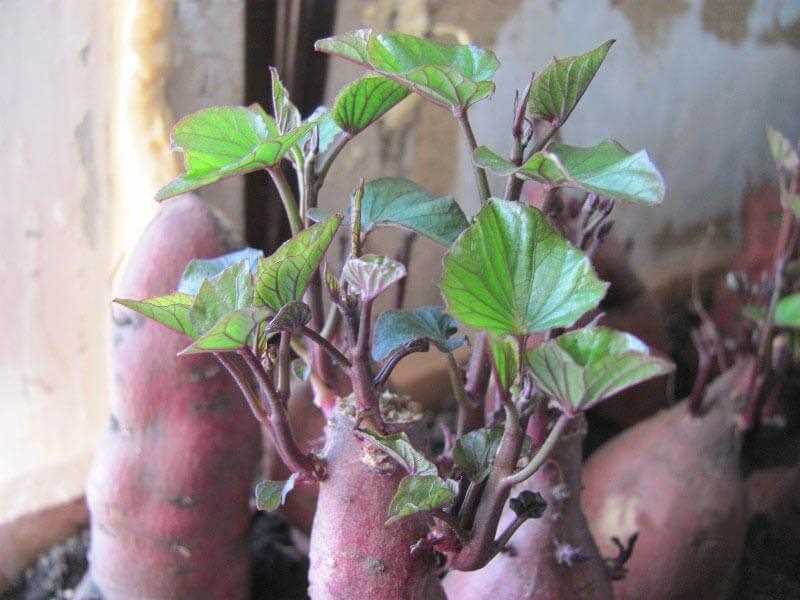
Черенкование батата – это эффективный способ получения большого количества клубней из небольшого количества растений. Для успешного черенкования необходима правильная подготовка почвы.
Выбор места и подготовка почвы

Для черенкования батата рекомендуется выбрать солнечное поле с плодородной почвой. Перед посадкой нескольких черенков важно подготовить почву, чтобы обеспечить оптимальные условия для роста и развития растений.
- Очистите участок от сорняков и камней, чтобы улучшить доступ кислорода и воды к корням растений.
- Рыхлите почву в глубину на 25-30 см, используя лопату или мотыгу. Это поможет улучшить дренаж и позволит корням батата свободно проникать в почву.
- При необходимости добавьте в почву органические удобрения, такие как перегной или компост. Они улучшат плодородие и обеспечат растения необходимыми питательными веществами.
- Приподнимите уровень почвы, чтобы создать гребень высотой около 15-20 см. Это поможет обеспечить хорошую вентиляцию и дренаж, а также защитит корни от гниения.
Правильная подготовка почвы перед черенкованием батата обеспечит растениям оптимальные условия для роста и развития. Это позволит получить большее количество крепких и здоровых клубней.
Выбор и подготовка здоровых растений
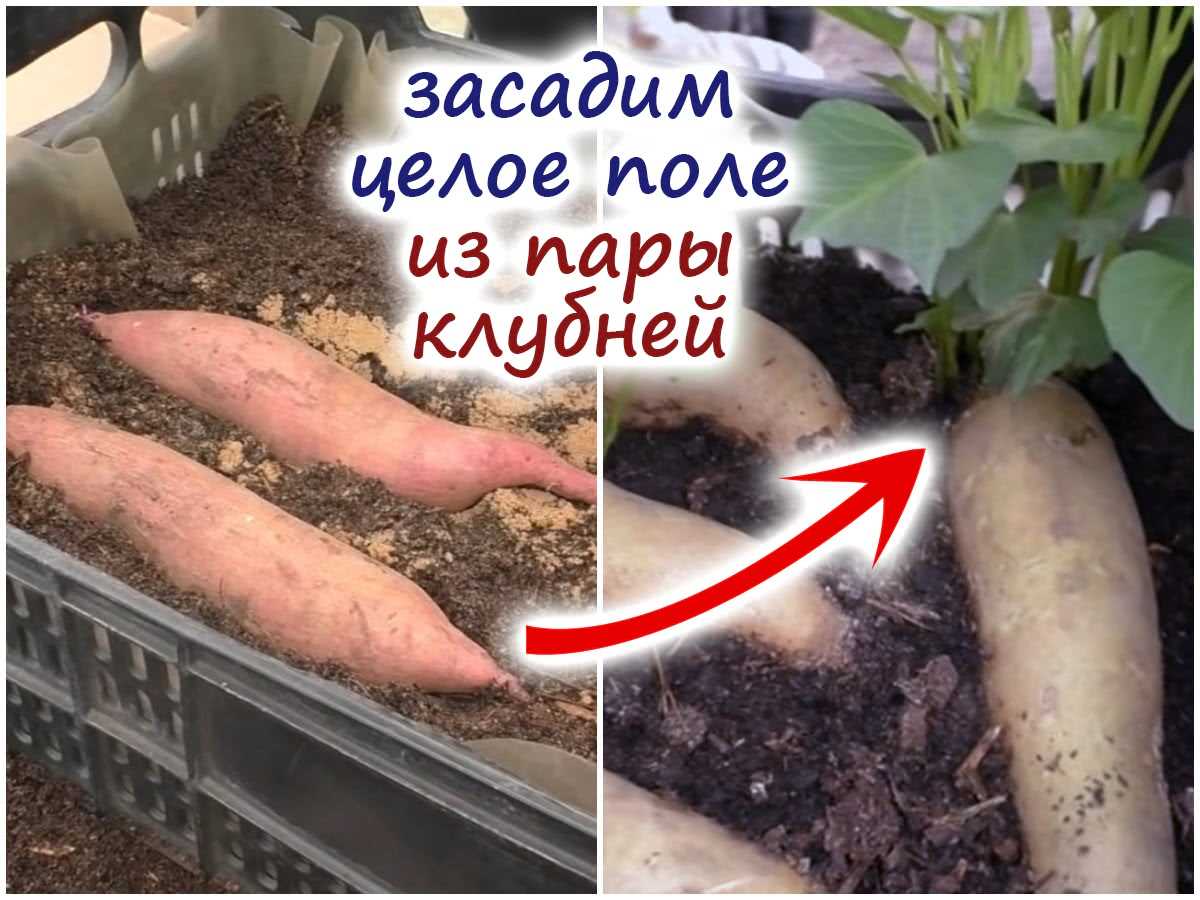
Перед началом черенкования батата необходимо выбрать здоровые растения для получения качественных клубней. Лучше всего использовать растения, которые имеют хорошую физическую форму и не имеют признаков болезней или повреждений.
Для черенкования можно взять несколько здоровых побегов с каждого растения. Отрезать их следует от основного стебля, оставляя при этом небольшой участок растения, чтобы черенок мог активно развиваться и укореняться.
Перед посадкой черенков в поле необходимо их подготовить. Для этого следует удалить нижние листья, оставив лишь верхние, чтобы растение могло сохранять влагу. Также рекомендуется обработать черенки корневым раствором или стимулятором роста, чтобы ускорить укоренение и улучшить их выживаемость.
Правильный способ укоренения черенков

Черенкование является эффективным способом получить новые растения из уже существующих. Для укоренения черенков батата необходимо засадить их в подготовленное поле.
Перед укоренением черенки должны быть подготовлены. Для этого выбираются здоровые и сильные черенки, длиной примерно 15-20 см. Для укоренения можно использовать черенки от нескольких растений, чтобы увеличить шанс на успешное приживление и получение хорошего урожая.
Чтобы укоренить черенки, их необходимо правильно посадить в землю. Для этого выкопайте ямки глубиной около 10-15 см и разместите черенки внутри, оставив над землей около 5-7 см. После посадки черенки следует обильно полить, чтобы земля хорошо пропиталась влагой.
Важно помнить, что черенки батата нуждаются в тепле и свете для успешного укоренения. Поэтому выберите для посадки солнечное место на участке и защитите растения от холодных ветров. Также следите за уровнем влажности почвы и регулярно поливайте растения.
Если все условия будут соблюдены, черенки батата должны укорениться и начать активный рост. В течение нескольких недель можно ожидать появления первых признаков развития клубней. При правильном укоренении черенков вы сможете получить хороший урожай батата.
Оптимальные условия для роста батата
Для успешного выращивания батата и получения хорошего урожая клубней необходимо создать оптимальные условия для роста растения.
Выбор места. Батат предпочитает солнечные и теплые места, поэтому выберите для посадки участок с открытым доступом к солнечным лучам на протяжении большей части дня.
Подготовка почвы. Хороший урожай батата можно получить на плодородных и рыхлых почвах с нейтральной кислотностью. Перед посадкой рекомендуется провести хорошую обработку почвы, включающую удаление сорняков и внесение органических удобрений.
Засадка черенков. Для выращивания батата можно использовать черенки из нескольких побегов растения. При посадке черенков необходимо сделать неглубокие отверстия на поле и засадить черенки в эти отверстия на глубину около 10-15 см.
Уход за растением. Важно регулярно поливать растение, особенно в период сухости. Также следует проводить прополку и рыхление почвы, чтобы предотвратить ее засорение и обеспечить доступ воздуха к корням.
Защита от вредителей и болезней. Для защиты от вредителей и болезней рекомендуется использовать специальные препараты или органические методы борьбы, такие как применение настоев трав или биологических инсектицидов.
Создание оптимальных условий для роста батата позволит получить качественный урожай клубней и насладиться вкусными и полезными продуктами своего собственного выращивания.
Полив и удобрение растений

Полив играет важную роль в успешном черенковании батата. Растения нуждаются в достаточном количестве влаги для нормального роста и развития клубней. Необходимо поддерживать постоянную влажность почвы, особенно в периоды активного роста.
Так стоп!!! Вы всё ещё не подписаны на наши каналы в Телеграмм и Дзен? Посмотрите: ТГ - (@historyfantasydetectivechat) и Дзен (https://dzen.ru/myshortsstorys)
Регулярный полив черенков батата поможет им прижиться на новом месте и развить корневую систему. Однако стоит помнить, что избыточное увлажнение может привести к гниению корней. Поэтому важно контролировать влажность почвы и поливать растения умеренно.
Кроме полива, для успешного черенкования растений важно правильно удобрять их. Батат требует питательных веществ для активного роста и формирования клубней. Чтобы обеспечить питательность почвы, можно использовать органические удобрения, такие как компост или перегнои.
Органические удобрения способствуют улучшению качества почвы и обеспечивают растения необходимыми микроэлементами. Рекомендуется вносить удобрения перед засевом черенков батата или внесением растений на поле.
При черенковании батата также можно использовать минеральные удобрения. Они содержат концентрированные питательные вещества и могут быть более эффективными в удовлетворении потребностей растений. Однако необходимо следить за правильным дозированием и не переборщить с удобрениями, чтобы не повредить растения.
Защита от вредителей и болезней
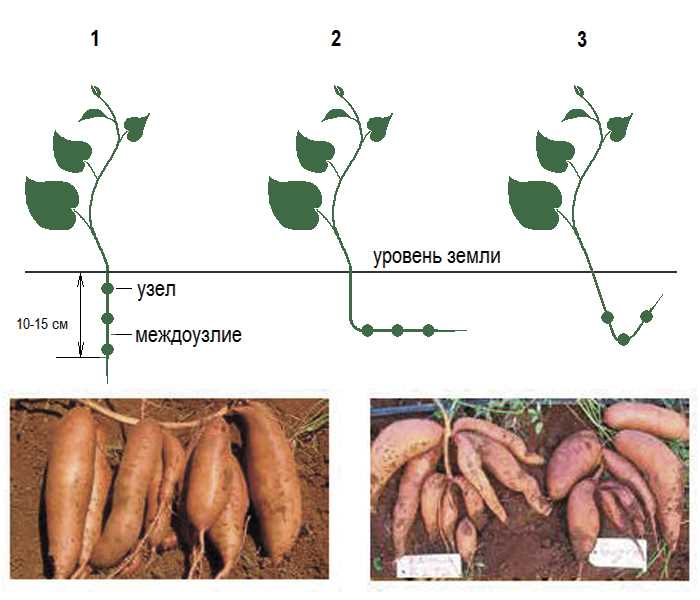
При выращивании клубней батата на поле после черенкования, необходимо обеспечить защиту растений от вредителей и болезней. Одним из распространенных вредителей является червец-медведка, который питается корнями и может нанести значительный ущерб урожаю. Для борьбы с ним можно применять специальные препараты или использовать механические ловушки.
Для защиты от других вредителей, таких как клещи или тли, рекомендуется проводить регулярные осмотры растений и применять специальные инсектициды в случае обнаружения насекомых. Важно помнить, что выбор препарата должен быть согласован с его совместимостью с бататом и соблюдением всех инструкций по применению.
Для профилактики болезней рекомендуется следить за состоянием почвы и осуществлять ее регулярное удобрение, чтобы поддерживать оптимальный уровень питательных веществ. Также рекомендуется соблюдать режим полива, избегая переувлажнения или пересушивания почвы, так как это может стать причиной возникновения грибковых инфекций.
Один из эффективных способов защиты батата от болезней – использование здоровых черенков при черенковании. При засадке на поле, необходимо выбирать качественные черенки, не имеющие признаков заболеваний или повреждений. Также рекомендуется проводить обработку черенков перед высадкой, чтобы уничтожить возможные патогены.
Следуя этим рекомендациям, можно обеспечить надежную защиту батата от вредителей и болезней, что позволит получить высокий урожай качественных клубней.
Когда и как собирать бататы
Черенкование батата — это процесс выращивания новых растений из черенков старых. Перед сборкой клубней батата необходимо определить время, когда они достигнут зрелости и будут готовы к сборке.
Оптимальное время для сбора бататов — осень. Примерно за 2-3 месяца до сбора, стоит срезать все побеги с куста черенками. Оставьте их на несколько часов, чтобы бататы могли подсохнуть и стать более прочными.
Для сбора бататов лучше выбирать сухую погоду. Очистите поле от листвы и других преград, чтобы у вас был доступ ко всем клубням. Осторожно выкопайте каждый куст и выньте клубни. Обязательно оставьте некоторые клубни с черенками на следующий сезон. Перед хранением сбор бататов рекомендуется просушить на протяжении нескольких дней, чтобы избавиться от лишней влаги.
Сохранение и хранение урожая
После успешного черенкования батата и выращивания его на поле, необходимо заботиться о сохранении и хранении урожая, чтобы он мог сохранить свои полезные свойства и длительное время радовать вас свежими клубнями.
Уборка урожая
Когда клубни батата достигают нужного размера и становятся зрелыми, их следует аккуратно выкопать из земли, используя лопату или вилку. При этом необходимо быть осторожными, чтобы не повредить клубни: прокалывание или разрывание может привести к быстрой порче урожая.
Чистка и сушка
После уборки урожая необходимо тщательно очистить клубни от почвы и промыть их под струей воды. Затем клубни следует оставить на солнце или в теплом месте для естественной сушки. Это поможет избежать гниения и сохранить клубни в хорошем состоянии.
Упаковка и хранение

Клубни батата можно хранить в различных условиях, но для длительного сохранения свежести и качества рекомендуется следующее: упаковывайте клубни в перфорированные пластиковые пакеты или полиэтиленовые пакеты с отверстиями для вентиляции. Храните их в прохладном и сухом месте, при температуре около 10-12 градусов Цельсия и относительной влажности около 75-80%. Такие условия позволят сохранить клубни в течение нескольких месяцев без потери качества и вкуса.
Использование батата в кулинарии

Батат – это уникальный продукт, который не только обладает приятным сладковатым вкусом, но и является полезным и питательным. Это корень, который можно использовать в различных кулинарных рецептах, придающих блюдам оригинальный вкус и аромат.
Один из способов использования батата – его приготовление в виде жареных картофельных ломтиков. Для этого батат нужно очистить от кожуры, нарезать на тонкие кружочки и обжарить на сковороде до золотистой корочки. Полученные ломтики можно подавать с соусом или использовать как гарнир к мясным или рыбным блюдам.
Также из батата можно приготовить вкусную запеканку. Для этого сладкий корень необходимо натереть на терке, смешать с яйцами, сахаром и мукой, а затем запечь в духовке до золотистой корочки. Запеканка получается нежной, ароматной и очень вкусной.
Еще одно интересное блюдо с использованием батата – это суп. Для его приготовления можно использовать мясной бульон, картофель, морковь, лук и черенки батата. Батат добавляется в суп в конце варки и придает ему сладковатый вкус и насыщенный аромат.
Кроме того, батат можно использовать для приготовления десертов, например, пирогов, кексов или маффинов. Этот корень добавляет выпечке нежность и сладкий вкус, делая ее более интересной и оригинальной.
Популярные сорта батата для черенкования

Батат — это корнеплод, который выращивается из клубней. Для черенкования необходимо выбрать подходящие сорта, которые обеспечат хорошее качество и урожайность клубней.
1. Сорт «Белая Сатин»
Этот сорт батата характеризуется светло-кремовой окраской мякоти. Он обладает нежным вкусом и ароматом. Клубни данного сорта имеют овальную форму и гладкую поверхность. «Белая Сатин» очень популярна среди садоводов благодаря своей устойчивости к заболеваниям и возможности хранения.
2. Сорт «Фиолетовый Жемчуг»
Этот сорт батата отличается насыщенно-фиолетовой окраской мякоти. Клубни имеют округлую форму и гладкую поверхность. «Фиолетовый Жемчуг» имеет сладкий вкус и аромат. Сорт отличается высокой урожайностью и хорошей устойчивостью к заболеваниям. Он идеально подходит для черенкования и выращивания на поле.
3. Сорт «Золотая Роза»
Этот сорт батата характеризуется золотисто-оранжевой окраской мякоти. Клубни имеют овальную форму и неправильную поверхность. «Золотая Роза» обладает сладким вкусом и ароматом. Сорт отличается хорошей урожайностью и устойчивостью к заболеваниям. Он идеально подходит для черенкования и выращивания на поле.
Выбирая сорт батата для черенкования, важно учитывать не только вкусовые предпочтения, но и устойчивость к заболеваниям и возможность хранения. Популярные сорта «Белая Сатин», «Фиолетовый Жемчуг» и «Золотая Роза» предоставят вам отличный урожай качественных клубней.
Вопрос-ответ:
Какой сорт батата лучше всего подходит для черенкования?
Для черенкования лучше всего подходят сорта батата, у которых стебли хорошо разветвлены и хорошо покрывают поверхность почвы. Некоторые из таких сортов: «Витэм», «Аямская красавица», «Белая сладость».
Можно ли черенковать батат из покупного клубня?
Да, можно черенковать батат из покупного клубня. Для этого нужно выбрать здоровый клубень и разрезать его на несколько частей, чтобы каждая часть имела хороший побег. Затем разместите эти части в благородной почве и следите за условиями выращивания.
Какие условия выращивания нужны для черенкования батата?
Для черенкования батата нужны следующие условия выращивания: хорошее освещение, тепло (температура воздуха не ниже 20 градусов Цельсия), умеренный полив, регулярное удобрение и защита от вредителей и болезней.
Сколько времени занимает черенкование батата?
Время черенкования батата зависит от условий выращивания и сорта. Обычно, для формирования корней и роста новых побегов требуется примерно 2-4 недели. Затем, после появления новых побегов, растение можно пересадить в постоянное место.
Как правильно ухаживать за черенкованными растениями батата?
Для правильного ухода за черенкованными растениями батата необходимо следить за поливом (поддерживать умеренную влажность почвы), регулярно удобрять, обрезать стебли (для стимуляции роста новых побегов), а также защищать от вредителей и болезней. Также рекомендуется поддерживать теплый режим выращивания и обеспечить достаточное освещение.


